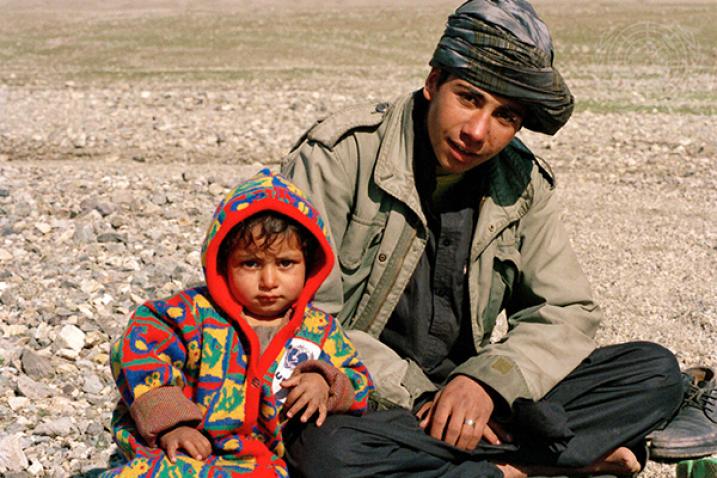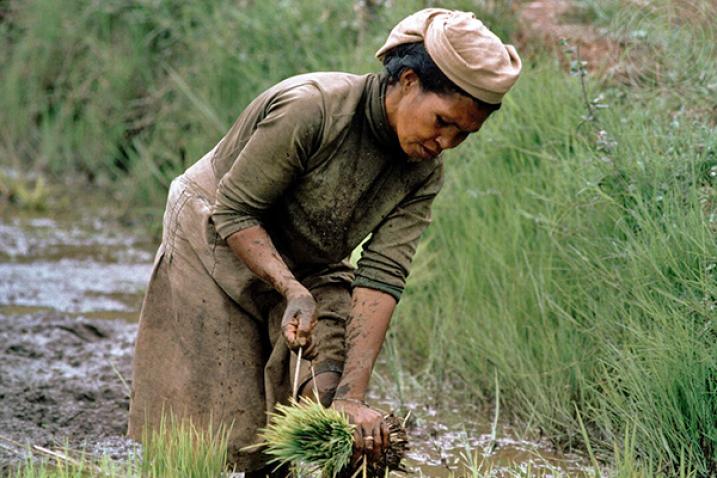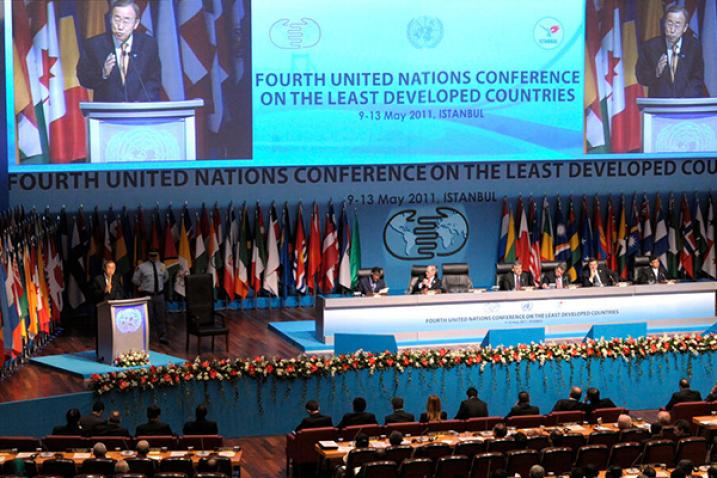BACKGROUND
In the late 1960s, the United Nations began to pay special attention to the least developed countries, recognizing those countries as the most vulnerable among the international community. The International Development Strategy for the second UN Development Decade for the 1970s incorporated special measures in favour of the least developed countries.
The category of least developed countries (LDCs) was officially established in 1971 by the UN General Assembly with a view to attracting special international support for the most vulnerable and disadvantaged members of the UN family.
In order to generate international attention and action to reverse the continuing deterioration of the socio-economic condition of these most vulnerable countries, the first United Nations Conference on the Least Developed Countries was held in Paris in 1981. It adopted a comprehensive Substantial New Programme of Action for the 1980s for the LDCs.
To continue focus on the need for special measures for these countries, the Second United Nations Conference on the Least Developed Countries (LDC-II) was held in 1990, also in Paris, adopting the Paris Declaration and the Programme of Action for the LDCs for the 1990s.
The Third United Nations Conference on the Least Developed Countries (LDC-III) was held in 2001 in Brussels, and was hosted by the European Union. It adopted the Brussels Declaration and the Brussels Programme of Action for the LDCs for the Decade 2001–2010. Following LDC-III, the United Nations Office of the High Representative for Least Developed Countries, Landlocked Developing Countries and Small Island Developing States (UN-OHRLLS) was established by the General Assembly.
In 2008, the General Assembly decided to convene the Fourth United Nations Conference on the Least Developed Countries (LDC-IV). That conference was held three years later, in Istanbul, Turkey, from 9-13 May 2011 in order to assess the implementation by the Least Developed Countries (LDCs) and their development partners of the Brussels Programme of Action.
The 5th United Nations Conference on the Least Developed Countries (LDC5) will be held in Doha in January 2022 to help build an ambitious new programme for action for LDCs and will be held at a critical time, as the decade of action for the 2030 agenda gathers pace.
WHICH COUNTRIES ARE LDCS?
The Committee for Development Policy (CDP), a subsidiary body of the Economic and Social Council, is responsible for reviewing the status of least developed countries (LDCs) and for monitoring their progress after graduation from the category. Six countries have so far graduated from LDC status: Botswana in 1994, Cape Verde in 2007, Maldives in 2011, Samoa in 2014, Equatorial Guinea in 2017, and Vanuatu in 2020.
The 46 current LDCs comprise around 880 million people, 12 percent of the world population. These LDC countries face severe structural impediments to growth and account for less than 2 percent of world GDP and around 1 percent of world trade. The CDP reviews the list of least developed countries every three years. The 46 countries currently on the list of LDCs includes:
Afghanistan, Angola, Bangladesh, Benin, Bhutan, Burkina Faso, Burundi, Cambodia, Central African Republic, Chad, Comoros, Democratic Republic of the Congo, Djibouti, Eritrea, Ethiopia, Gambia, Guinea, Guinea-Bissau, Haiti, Kiribati, Lao People’s Dem. Republic, Lesotho, Liberia, Madagascar, Malawi, Mali, Mauritania, Mozambique, Myanmar, Nepal, Niger, Rwanda, Sao Tome and Principe, Senegal, Sierra Leone, Solomon Islands, Somalia, South Sudan, Sudan, Timor-Leste, Togo, Tuvalu, Uganda, United Republic of Tanzania, Yemen, Zambia.
THE SUSTAINABLE DEVELOPMENT GOALS AND THE LDCS
Accelerated economic development in the least developed countries (LDCs) is at the centre of efforts to achieve the Sustainable Development Goals (SDGs). Not only is the incidence of poverty and malnutrition the greatest in this group of countries, but the selection and implementation of effective policies to overcome these problems are also the most challenging there. The SDGs comprise several goals which explicitly refer to income growth, employment creation and industrialization. The achievement of all other goals also depends on progress made on the economic front. Some SDGs are important reference points for the design of national development strategies for least developed countries. These are SDG 1, SDG 2, SDG 7, SDG 8, SDG 9, SDG 10, SDG 13 and SDG 17.*
(* from: Achieving the Sustainable Development Goals in the Least Developed Countries)
DOCUMENTS AND RESOURCES
- Office of the High Representative for the LDCs, Landlocked Developing Countries and Small Island Developing States
- Technology Bank for the Least Developed Countries
- UNCTAD: least developed countries resources and information
- 2021: Comprehensive study on the impact of COVID-19 on the LDC category
- 2018: Selected sustainable development trends in the least developed countries
- 1971: Identification of least developed among the developing countries by the UN General Assembly A/RES/2768 (XXVI)
- 1970: UN General Assembly request for identification of least developed among the developing countries (A/RES/2724 (XXV)





